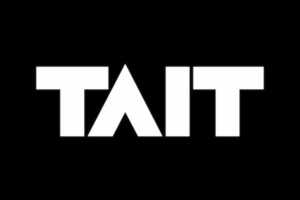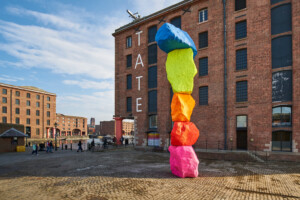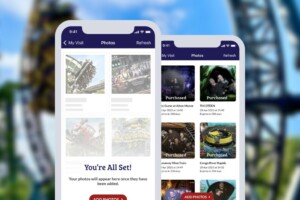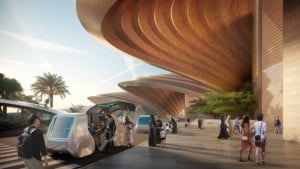Related: Gamification: Why Chorewars doesn’t work and networking "IRL" /Alton Towers harnesses the Wisdom of Friends – Facebook Places Deals launch in UK / Thinkwell Group Announces Launch of Studio Thinkwell/ Theme Parks – From E commerce to M commerce / Total Immersion – The Goal of Interactive Gaming / Attractions: The Future of Out-of-Home Entertainment / Getting In the Game. What The Experiential Design Industry Can Learn from Today’s Gamer Culture / Holograms and “Gamification” Raising the Bar for Theme Parks
“2011 will be the year of gamification, ” says gamification guru Gabe Zichermann. Zichermann, author of Gamification by Design & Game-Based Marketing and CEO of Gamification Co is riding the crest of a marketing wave that is set to engulf us this year. With a talent for a catchy turn of phrase Zichermann has declared gamification “the new black”. Interest has been sparked in the Attractions Industry following the IAAPA seminar hosted by Dave Cobb, Creative Director at Thinkwell Design & Production, which included Zichermann on the panel. Blooloop follows up on the discussion to look at what gamification can bring to the Park.
The Concept
The essence of gamification is that by using techniques employed in gaming you can boost fun and engagement in real life situations and thereby motivate individuals to adapt their behaviour. 
Game designers have spent decades making video games fun and addictive, and these skills together with advances in mobile technology and our love of social networking, merge together to create opportunities for games to break away from the computer or TV and into our everyday lives. We’re already used to seeing features of games on websites: surveys, progress bars, leaderboards and review stars. The potential to gamify any task means that the boundaries between work and play, and games and real life will become blurred.
Work v Fun
We have long understood that humans like to play games, and that the most effective motivation is achieved by offering more than just tangible rewards. Sensible parents know that making a task fun means that it is more likely to get done without tears and tantrums. A great boss is one who earns our loyalty by making us feel valued as individuals. Gaming uses these concepts to structure challenges and rewards, with the rewards often being about social status and achievement rather than prizes with monetary value.
Using gaming techniques and technology can motivate us to do things that we would otherwise consider unappealing like exercise, housework and even personal hygiene routines. The National Taiwan University trialled a toothbrush which tracked movement with a Wii-style remote, and showed virtual teeth being cleaned on a screen. The kindergarten children who took part in the trial became twice as effective at cleaning their teeth. Fitbug uses an accelerometer to track a person's daily physical activity, and awards "vitality points" that can be redeemed for discounts on health insurance plans. Chorewars.com allows us to log household tasks completed against an online avatar , and earn adventures, “gold” and status upgrades from peasant to dungeon mistress just for doing the laundry.
Marketing Applications
In a world where the “wisdom of friends” in our virtual social circles has replaced the voice of traditional advertising, Zichermann (right) believes that relying on brand promotion via conventional campaigns is no longer enough to ensure customer loyalty. We can avoid TV advertising with TiVo and Sky+, however our Achilles heel is social networking via mobile devices. Whilst we are becoming immune to blanket marketing campaigns, we welcome contact from companies who know us and our friends and what we like. The next evolutionary step from utilising social networking is to gamify, ie to create engagement and offer rewards in order to influence behaviour. Zichermann believes that this is what consumers want and that, “depending on consumers’ intrinsic motivation to take actions for you as a brand is over”.
The Rise of Gamification
Zichermann chaired the first Gamification Summit in January. He told Blooloop, “This year, many of the world's largest brands and most exciting startups will gamify their consumer experiences, looking to leverage the power of points, levels, badges, challenges and rewards to engage and grow their communities. The inaugural Gamification Summit in SF was a big hit – we had a standing room-only crowd of 400 people, and a number of attractions-related companies, including Disney, attended. The interest from the attractions industry is huge, and we plan to add more content to upcoming GSummits for that purpose.”
.jpg)
Applying Gamification to the Attractions Industry
Zichermann sees great potential for applying gamification within the Attractions Industry: “Building engagement for an attraction is not much different than any consumer-facing experience – the normal challenge is to get users to interact with the property between actual visits, and to increase social/viral promotion at all times. The idea is that increased engagement ultimately drives revenue. Gamification can produce a series of user interactions that span the 98% of time they are not at an attraction, building interest and excitement. Loyalty Programs have historically served some of this role but are quickly becoming subsumed by gamification – a strategy that rewards people for their loyalty generally without giving away free stuff (like admissions). In fact, the idea would be to generate more revenue from the most engaged users, rather than less.”
Zichermann’s reward model called SAPS: Status, Access, Power and Stuff can be applied within the Attraction Industry. He advises, “This is the order in which user rewards should be given, from stickiest to least compelling. By hewing to the SAPS model, attractions vendors could reduce costs, improve stickiness and retention, and create true year-round engagement.”
Dave Cobb (right) also believes that visitor attractions can reap benefits from looking at gamification: “If they succeed  at balancing their real-world product with the digital tools of gamification, they can extend their experience beyond the boundaries of their location, and beyond the actual time that guests stay there. The goal is to expand your themed entertainment experience and make it part of your guest’s ongoing diet of online entertainment, not just while they’re at your venue. It would be amazing to be able to build an entertainment experience that starts in the real world, continues online after they leave, and then picks up again when they return. With the right experience, that can create lasting memories and long-term guest loyalty.”
at balancing their real-world product with the digital tools of gamification, they can extend their experience beyond the boundaries of their location, and beyond the actual time that guests stay there. The goal is to expand your themed entertainment experience and make it part of your guest’s ongoing diet of online entertainment, not just while they’re at your venue. It would be amazing to be able to build an entertainment experience that starts in the real world, continues online after they leave, and then picks up again when they return. With the right experience, that can create lasting memories and long-term guest loyalty.”
Interest from the Attractions Industry
Cobb’s motivation to bring a discussion on social media and gamification to IAAPA (Designing Guest Experiences to Take Advantage of Social Media) came from an interest in technology and social networking and the potential applications for the industry. “We felt it was a good time to start the discussion in our industry about the intersection between games, marketing, and social media. Obviously, technology has been on a democratizing streak for the past decade or so — everyone’s a content creator now. Which is awesome. Everyone's got this portable supercomputer in their pocket nowadays, and every industry is finding ways to capitalize on that connectivity and intimacy with their customers. It's inescapable: people use these devices in theme parks, museums, and public places, so we can't ignore that. It's an important point that we really have to address and discuss – the evolution of our audience's expectations, the ubiquity of technology, and the relevancy of our themed-entertainment products.
We’re lucky to have some great relationships with a few amazing innovators in the field, so we invited them to IAAPA last year for our panel: Susan Bonds from 42 Entertainment; Wishing Stars creator Greg Maletic; Jeff Voris, Director of Advanced Projects for Disney Parks & Resorts Online; and gamification guru and author Gabe Zichermann. It was a really diverse group, from both inside and outside our industry, so it was a pretty rousing discussion filled with all the stuff you want at a panel — awesome banter, challenging ideas, and lots of unresolved questions.”
 The response to the seminar was, “ Excitement, curiosity, even a little fear. I think overall, folks in our industry see this huge buzz about social media and definitely want to use it, but aren’t really sure how, and are worried it might not be worthwhile. We’re not an industry that lives in a digital realm that can instantly react to trends and turn on a dime — we still rely on brick-and-mortar for our primary guest interaction, so there’s definitely a degree of conservative caution.”
The response to the seminar was, “ Excitement, curiosity, even a little fear. I think overall, folks in our industry see this huge buzz about social media and definitely want to use it, but aren’t really sure how, and are worried it might not be worthwhile. We’re not an industry that lives in a digital realm that can instantly react to trends and turn on a dime — we still rely on brick-and-mortar for our primary guest interaction, so there’s definitely a degree of conservative caution.”
Applications in the Industry
There are already several interesting innovations already out there. Cobb notes that, “baby steps like Disney’s Gowalla deal, and their connected attraction games like Buzz Lightyear, are definitely a step in an interesting direction. 42 Entertainment won a THEA this year for their FLYNN LIVES alternate reality game (promoting TRON: LEGACY), which was as much about real places and destination attractions as it was online game play. I think the most successful example might just be the “Wishing Stars” app, which is a really fun and engaging game, and it’s totally fan-created. Which means technically, it’s not gamification — which usually has some sort of marketing connection. But Greg’s app shows the possibilities of using portable, connected, GPS-empowered devices in an entertainment space that’s already quite dense with content — he’s taken the Disney parks and added a “hidden layer” of value for fans.”
The applications to date have divided into those that try to enhance the guest experience when the visitor is in the park, and those that build engagement between visits like promotional campaigns ahead of launches. Zichermann says, “There are two distinct opportunity spaces – during a visit and between visits. I'd posit the latter is bigger.”
Pitfalls
For gamification to deliver real value, attractions need to do more than just add a leaderboard or ratings stars to their website. Zichermann asserts that in order to create true customer loyalty we need to really think about whether we are in the business of providing a visitor experience at our location based venue, or building a long lasting relationship with our customers. It is interesting to note that Disney have already sought to extend the experience beyond the visit with the launch of their “when are you going to tell them” advertising campaign in February, which seeks to incorporate the “reveal” of a trip to Disney to a child as part of the family experience.
If gamification, social networking and mobile devices are brought into the in-park experience, then care needs to be taken that this doesn’t detract from the attraction itself. Cobb says, “In the real world, adding gamification can add a spark of fun to a customer’s day-to-day life. Rewards programs, check-in apps, and social-media games are all augmentations or mini escapes from the real world. But in themed entertainment, we’re already that escape. We spend a lot of time, money and attention on crafting experiences that lead a guest’s focus very carefully, whether they know it or not. Masterplanning leads guests through a park experience without stress, attractions and shows lead guests through stories and spectacle in memorable ways, museums carefully lead a guest’s curiosity through dense educational topics, retail and food service add relaxation and quality social time to a guest’s visit. Adding gamification to all of that shouldn’t feel like a chore — it shouldn’t add stress or confusion to a guest’s visit. Nor should we take away from the primary reason people seek out themed-entertainment in the first place — to share real-world adventures and experiences with their family and friends, not have their nose buried in their mobile phone.
It’s got to be a balance. There’s already enough advertising in the world, so paying for a ticket to a park only to be advertised to every five seconds on my mobile phone isn’t the answer. Mobile phones are sort of our “digital identity”, so asking a guest’s permission to connect to all those powerful tools in their pocket opens up some really cool options for personalization and game-based ideas.”
Future Technology
Cobb sees some exciting opportunities ahead: ““Cameras, wireless connectivity, and processing speed will all get cheaper and faster, for sure. Video projection is getting ridiculously small and inexpensive, so transforming surfaces with registered projection will get more interesting and ubiquitous. Take something like Disney’s new “The Memories & You” show, which combines the immediacy of parkwide digital photography with huge architectural projections — it’s that kind of intersection between two rapidly advancing technologies that can enable cool experiences.”
 In the next few years we will see radio-frequency identification (RFID) tags added to all sorts of everyday objects from garbage cans to cereal packets. We are also on the verge of seeing huge leaps in 3D and holographic technology which will truly bring games out of the console: Sony have already exhibited a demonstration model of a 3D hologram which responds to viewers hand movements and researchers at Tokyo University have used ultrasonic waves to enable users are able to feel 3D holographic characters running on their hands or touch raindrops. As we move to deeper physical immersion in gaming, advances are even being made in mental interaction. NeuroSky’s current NeuroBoy game uses electroencephalography (EEG) to monitor and interpret brainwave patterns via a headset. This allows users to levitate on screen objects by relaxing, or to set them on fire by concentrating hard! Future developments will maximise the individual’s enjoyment of the gaming experience by reading thoughts and biometric signs and tailor the action accordingly.
In the next few years we will see radio-frequency identification (RFID) tags added to all sorts of everyday objects from garbage cans to cereal packets. We are also on the verge of seeing huge leaps in 3D and holographic technology which will truly bring games out of the console: Sony have already exhibited a demonstration model of a 3D hologram which responds to viewers hand movements and researchers at Tokyo University have used ultrasonic waves to enable users are able to feel 3D holographic characters running on their hands or touch raindrops. As we move to deeper physical immersion in gaming, advances are even being made in mental interaction. NeuroSky’s current NeuroBoy game uses electroencephalography (EEG) to monitor and interpret brainwave patterns via a headset. This allows users to levitate on screen objects by relaxing, or to set them on fire by concentrating hard! Future developments will maximise the individual’s enjoyment of the gaming experience by reading thoughts and biometric signs and tailor the action accordingly.
We will come to expect companies who want our business across all sectors to know us, our preferences, our friends and even monitor our mood and to tailor their interaction with us accordingly to make their offering more appealing. For attractions, “the killer app would be to remove the tech entirely, so that the entire theme park, museum or attraction just “knows” who I am and what I like, and can respond in kind, ” says Cobb. “Image recognition and passive scanning technologies are almost there for that kind of thing — but it will still take engagement and “buy-in” from the consumer, and permission for using that data.”
Gamepocalypse or Gametopia?
For some the vision of the future where we are increasingly monitored and rewarded for “good” behaviour conjures up images of Big Brother. Jesse Schell, a Professor of Entertainment Technology at Carnegie Mellon, specializing in Game Design and ex Walt Disney Creative Director of the Imagineering VR Studio, has coined a phrase for a world where the unethical roll out of monitoring devices and game mechanics creates a game-powered surveillance prison: "Gamepocalypse".
 On the other hand gamification could just make our lives more fun by turning work into play. Some altruistic gamers even see a future where the problems of the real world will be solved by collaborating gamers. For instance, Evoke (right) challenged players to work together to solve real world problems like water safety, food security and sustainable energy. Solutions, in the form of blogs were rated not just within the game community, but are also being evaluated by the World Bank Institute for potential funding.
On the other hand gamification could just make our lives more fun by turning work into play. Some altruistic gamers even see a future where the problems of the real world will be solved by collaborating gamers. For instance, Evoke (right) challenged players to work together to solve real world problems like water safety, food security and sustainable energy. Solutions, in the form of blogs were rated not just within the game community, but are also being evaluated by the World Bank Institute for potential funding.
But what if we don’t want to play? It seems unlikely. Gamers no longer conform to the stereotypical image of spotty teenage boys cocooned in their rooms. The average age is 35 with a gender breakdown of 60/40 male to female. Around 40 per cent of American adults are regular gamers.*
Back from the Future
So enough of the future, where does it leave the Attractions Industry in 2011? Gamification is the next logical step on from the adoption of social networking and mobile apps. Attractions are all about the guest experience. Using gamification wisely to reinforce the customer’s relationship with a location based entertainment venue offers the benefit of enhanced customer loyalty and the opportunity to communicate with the customer between visits.
Cobb concludes, “The minute an attraction becomes solely about the allure of some hi-tech widget, it will become dated very quickly. It also has to augment — but not overshadow — the physical experience, because that’s what we do, we create compelling physical experiences that people can’t get at home. I don’t think we ever want to lose sight of that. It has to be about something more resonant — story, emotion, engagement, and the thrill of spectacle still reign supreme. But a digital layer of augmentation — with the power of social interaction, internet connectivity, location awareness, and other tech added to the mix — can be a powerful tool both in terms of creating memorable guest moments and increasing business potential."
Sources:
Graph: kind courtesy of Gamification.co
* Data: Dmitri Williams, of the Annenberg School for Communication and Journalism at the University of Southern California, San Diego – Journal of Computer-Mediated Communication, vol 13, p 993












